Welcome to The Autumn Chronicles, a place to shine a light on all the wonder around us as we navigate the seasons. I hope these writings allow you to sit quietly with a cup of something warm and comforting and take a few moments for yourself away from the rush and hurry. If you would like to make sure you get all newsletters directly to your inbox, please subscribe below. Thank you for being here. All photos © The Autumn Chronicles.
Despite having lived in London all my life (apart from brief stints in Madrid, Granada and Paris and my time at university in Nottingham), there are still so many areas of the city I have never visited. Part of this is due to its vastness; London stretches all the way from Hillingdon in the west to Havering in the east and from Enfield in the north to Croydon in the south, a total of 607 square miles of city to wander and discover1.
I can’t remember exactly what the 27 year old me was doing in 2012 but the Olympics in London completely passed me by. Consequently, I had never been to the Olympic Park or even to Stratford before so when the second day of January dawned bright and cold after weeks of leaden grey skies and mizzle, my husband and I decided to take ourselves out for a walk to explore. We had spent all of Christmas laid up with a respiratory virus so getting out into the fresh air (as fresh as you can get in the middle of a major metropolis at least) and to make the most of our time off work was something I was desperate for. We wrapped up warm, packed some snacks and some water into a backpack and set off for the Tube station.
We are very lucky where we live in Greater London. We are well served by the Tube network, which means we can get around the city relatively straightforwardly. Travelling to Stratford was effortless and the fact that it was a weekday and we could travel outside of rush hour meant that we were spared the horror of the regular commuter crush. On arrival, the station empties into a vast Westfield shopping centre but beyond the hustle and bustle of this temple of modern-day commerce and consumerism lies a web of canals, locks and waterways, originally channels carving their way through salt marshes, that have existed for generations.
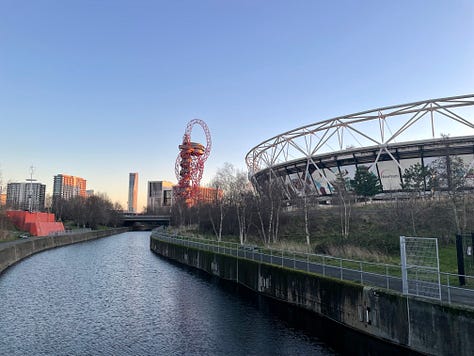
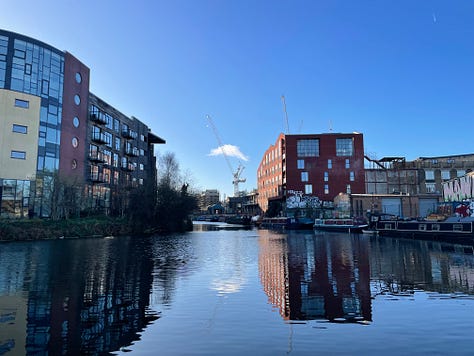
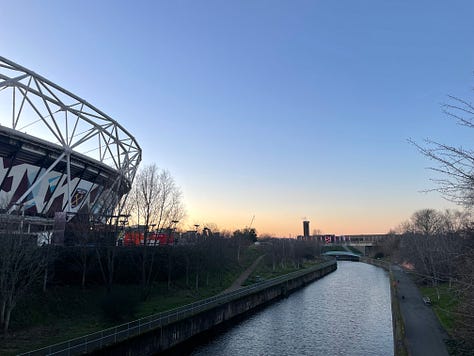
Our original itinerary was re-routed when we happened to bump into a very friendly man called Mal who turned out to be an Olympic Park champion (as well as a broadcaster, having previously hosted a radio show in the US and interviewing Paul McCartney and Rod Stewart, among others) and offered to show us around on his way home. Always interested in understanding a local perspective and in the market for a more authentic experience, we accepted and returned the guidebook to the backpack for another day. The area around the canal belt has served many purposes over the years but it was predominately home to several mills, processing the grains that kept the people of London topped up with bread and gin. When a lot of the industry moved out of the area in the 1960s and 70s, the area became wasteland until it was restored as part of the regeneration projects that sprang up around the building of the Olympic Park in the run up to the 2012 Olympics.
During the building of the park, London’s newest and biggest, it was discovered that a lot of the soil had become toxic from years of manufacturing and industrial waste. To redress this, the soil was cleaned and decontaminated and woodlands were planted, along with reedbeds lining the banks of the rivers and canals to create a sustainable system of drainage. The park is now home to many different types of wildlife and counts newts, bats, various types of fish and birds including herons, goldcrests and kingfishers among its residents. There is a focus on biodiversity and sustainability to ensure habitats for wildlife are protected and that the park’s ecological focus remains paramount, meaning it will hopefully be enjoyed by all who visit and live here for generations to come.
As part of the ongoing development works, the London Blossom Garden was opened in 2021 to pay tribute to those who lost their lives during the Covid pandemic, as well as to celebrate the key workers on whom we all depended. There are 33 trees, one for each London Borough plus the City of London, chosen from a selection of cherry, cherry plum, crab apple and hawthorn. We visited in winter but, as blossom is perhaps my second favourite natural phenomenon (the first being sunsets and the third being tree silhouettes against winter skies - is it weird I keep a list?), I can’t wait to go back in the spring and experience the garden at its efflorescent best.
Along the banks of the waterways nearest the Olympic Stadium (now home to West Ham, my husband’s favourite football team), the 2012 Gardens celebrate the countries that participated in the Olympic Games of that year. The gardens are themed around different climactic zones and highlight plants found in Europe, Asia, the Southern Hemisphere and North America. Most of the ground lay dormant during our walk but we did see a glorious bank of early daffodils. Daffodils have always been meaningful to me; they were the favourite flower of both my grandmother and my mother and, along with tulips, they are inextricably intertwined in my subconscious with the coming of spring and the promise of hope and renewal after the severity of winter. As we have had some very cold days and severe frosts since our visit, my hope is that these gorgeous flowers will bloom again with the coming of warmer weather. While their presence in January is probably more a worrying indicator of the prevalence of climate change, there is something wonderful about the vivid splash of yellow on a cold, clear winter’s day.
18,000 steps later and with our feet tired and sore, we headed back to the Tube station. Walking, in and of itself, is often a balm for my soul. It encourages me to move a body that tends to sit in one position at a desk for too many hours a day and gives me the time and mental space to think, plan and dream. It is the best way I know to continue painting a mental snapshot of the multitude of places, moments and situations in which we exist and of celebrating life as an extraordinary series of small, ordinary - but no less meaningful - events.
If you’d like to read my previous post about walking and how it helped me to cope with homesickness when I lived abroad, it can be found here:
I’d love to know: what are your experiences of discovering a previously unknown place?
If you have enjoyed this post or if something has resonated with you, please share to help others find The Autumn Chronicles. I am so grateful to you for being here and for choosing to read these words.
According to the Corporation of London: https://www.cityoflondon.gov.uk/about-us/about-the-city-of-london-corporation/our-role-in-london


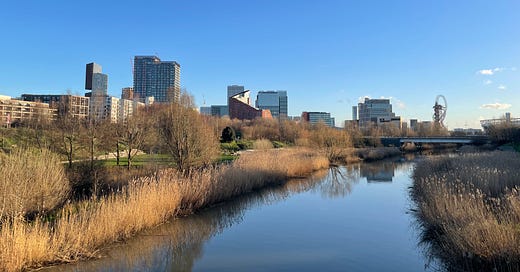



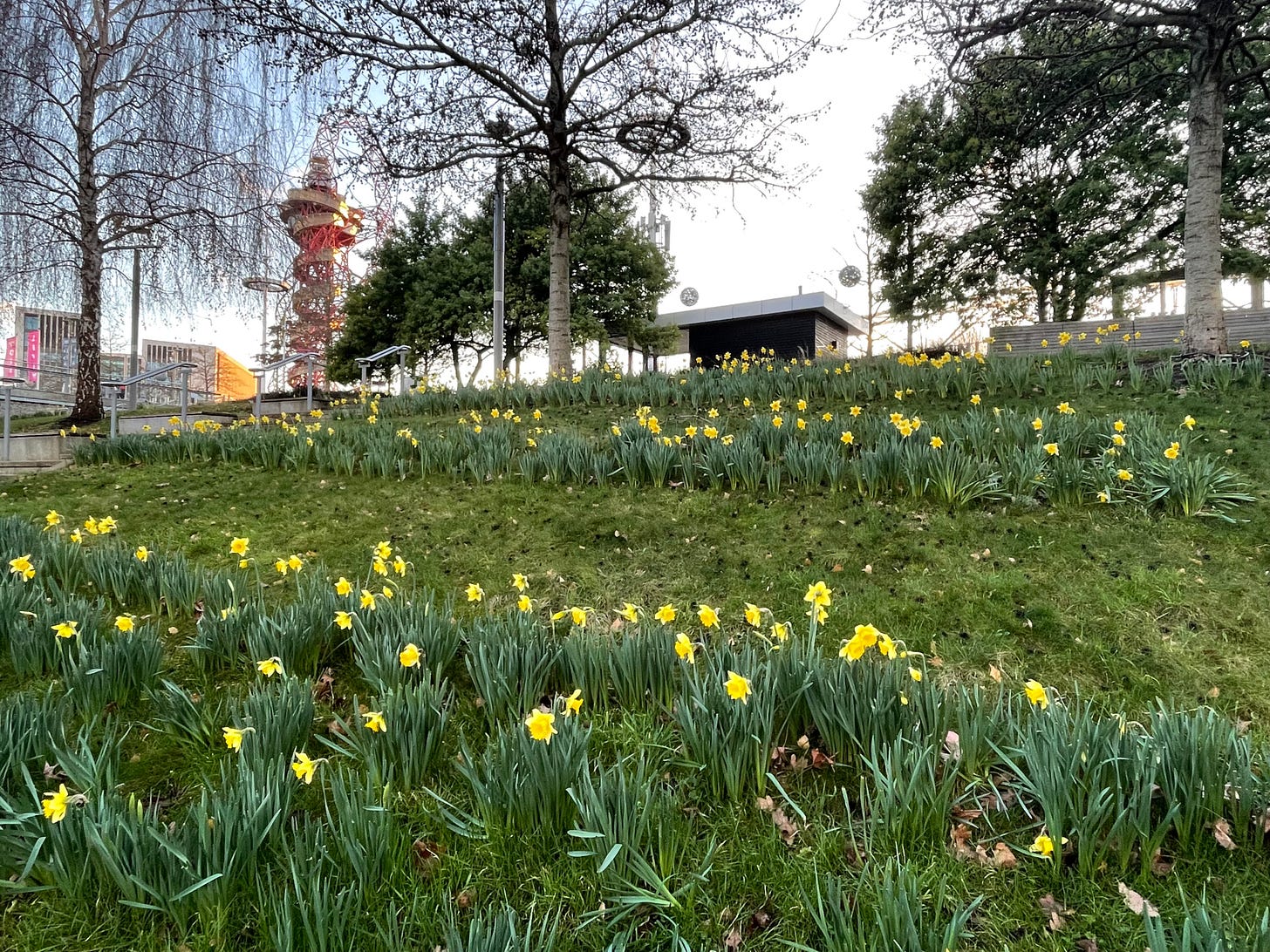


I love exploring home and finding that there is always something more to discover. The places we live give us so much.
So interesting! I adore London (in small doses), and never tire of it, but this isn’t an area I’ve visited. I suppose that I was brought up in a world where the East End was the place where the slums were; I find it hard to imagine it as anything else! We just add it to our list of places to visit! 🌿